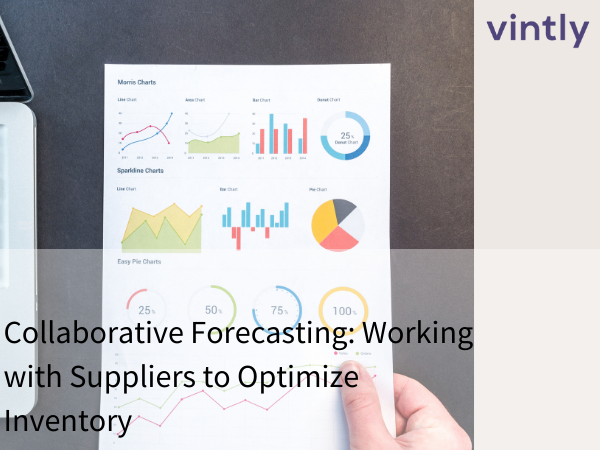Why Supplier Performance Metrics Are Critical to Business Growth
In today’s hyper-competitive market, business success often hinges on more than just internal efficiencies—it depends on the strength and reliability of your supplier network. Supplier performance metrics provide a clear, quantifiable way to assess your suppliers’ contributions and pinpoint opportunities for improvement. By leveraging these insights, companies can drive cost savings, enhance product quality, and secure a competitive edge.
The Foundation of Supplier Performance Metrics
Supplier performance metrics are the key performance indicators (KPIs) that measure how effectively your suppliers meet your business requirements. These metrics go beyond basic delivery times and price comparisons. They encompass a variety of factors, including quality, responsiveness, innovation, and compliance with agreed-upon standards.
By establishing clear metrics, businesses create a transparent framework that holds suppliers accountable while also highlighting their strengths. This transparency fosters a culture of continuous improvement—benefiting your procurement strategy and strengthening your overall supply chain.
Why Metrics Matter in Today’s Business Landscape
1. Enhanced Operational Efficiency:
Supplier performance metrics help identify bottlenecks and inefficiencies in the supply chain. For example, consistent delays or quality issues can signal that a supplier may require additional support or process improvements. This proactive approach allows you to mitigate risks before they escalate into major disruptions.
2. Cost Management and Savings:
Accurate metrics enable businesses to negotiate better terms by having concrete data on supplier performance. When suppliers understand that their performance is being measured, they are more likely to strive for efficiency and cost-effectiveness. Improved performance can lead to reduced costs through streamlined operations and minimized waste. For more on cost control strategies, check out Forbes on supplier management.
3. Improved Product Quality:
Quality is often at the heart of business growth. Suppliers who consistently meet quality benchmarks contribute to higher product standards, resulting in increased customer satisfaction and lower return rates. Over time, this not only strengthens your brand reputation but also builds customer loyalty.
4. Strategic Supplier Relationships:
Metrics provide the foundation for building strong, mutually beneficial relationships with suppliers. By regularly evaluating performance, you can reward high-performing partners and collaborate with them on innovation initiatives. Conversely, metrics highlight areas where underperforming suppliers might need support or a change in strategy.
Key Performance Metrics to Track
To fully benefit from supplier performance metrics, focus on the most impactful KPIs. Consider incorporating the following:
- Delivery Timeliness: Measures the reliability of suppliers in meeting delivery deadlines. Timely deliveries ensure that production schedules remain on track and help avoid costly production halts.
- Quality Compliance: Assesses the quality of the goods or services provided. A high quality compliance rate indicates that suppliers adhere to your quality standards, reducing the risk of defective products reaching the market.
- Cost Competitiveness: Evaluates whether the supplier offers competitive pricing without compromising quality. This metric helps you balance cost and performance.
- Responsiveness and Communication: Tracks how quickly and effectively a supplier responds to inquiries, issues, or changes. Strong communication is critical for swift problem resolution and agile decision-making.
- Innovation and Continuous Improvement: Monitors a supplier’s commitment to process innovation and improvement initiatives. Suppliers that invest in innovation can offer more efficient and future-ready solutions.
Implementing Supplier Performance Metrics in Your Organization
Integrate supplier performance metrics into your operations with these strategic steps:
- Define Clear Objectives:
Establish what you hope to achieve with your supplier performance program. Whether it’s reducing lead times, cutting costs, or improving quality, clear goals ensure that your metrics align with your business strategy. - Select the Right KPIs:
Not every metric will be relevant to every business. Choose KPIs that directly influence your supply chain’s performance and overall business growth. - Communicate Expectations:
Clearly share your performance criteria with suppliers. Open communication sets expectations and encourages a collaborative approach to improvement. - Leverage Technology:
Invest in supply chain management and analytics tools that allow you to track supplier performance in real time. Automation simplifies data collection and analysis, providing actionable insights quickly and accurately. Learn more about modern tools on Supply Chain Digital. - Regularly Review and Adjust:
Supplier performance is not static. Regular reviews help you adjust strategies based on market changes, new business priorities, and evolving supplier capabilities.
Real-World Benefits: How Metrics Drive Business Growth
Companies that implement supplier performance metrics see tangible benefits. For instance, a mid-sized manufacturer might reduce production delays by 20% after identifying consistent issues with a particular supplier’s lead times. Over time, these improvements translate into faster time-to-market, enhanced customer satisfaction, and increased revenue.
Strong supplier performance data also empowers businesses to negotiate better terms during contract renewals. When suppliers know that their performance is being tracked against industry benchmarks, they are more likely to invest in process improvements. This proactive approach creates a win-win situation: your company benefits from a more efficient supply chain, while suppliers enhance their operations and competitive positioning.
Conclusion
Supplier performance metrics are more than just numbers on a dashboard—they are a strategic tool that can drive significant business growth. By implementing a structured approach to evaluate supplier performance, companies can reduce risks, improve product quality, and achieve cost efficiencies that lead to a sustainable competitive advantage. In today’s ever-evolving market, leveraging these metrics is not just an option; it’s a necessity for businesses aiming to thrive.
Embrace supplier performance metrics today and watch your business soar to new heights of efficiency and profitability. For more insights on optimizing your supply chain, explore our comprehensive guides.
.png)


